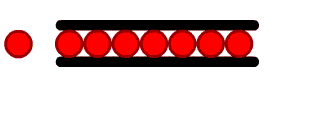Electricity speed and data transfer
Electricity in wires is essentially the movement of charge-carriers such as electrons. These move very slowly.
However a change in voltage at one end of a wire causes a corresponding change at the other end of the wire almost instantly.
Think of a very long hose pipe, if the pipe is empty when you turn on the tap, it can take a few seconds for the pipe to fill with water before it starts coming out the other end. If the pipe is filled with water already, turning the tap in will instantly force water out the far end.
Voltage is roughly analogous to pressure. A change in water pressure can be transmitted through a pipe full of water faster than the water moves.
I actually wrote a blog post on this exact question a few years back.
Basically, though the individual electrons move at only a few millimeters a second, the "signal" of their bumping into each other moves much faster than that (a large fraction of the speed of light).

Note how the balls enter the tube very slowly, but the "signal" that a ball has entered (the force propagating down the tube) moves much faster than that. Electrons moving in a wire work in a very similar way.
The speed at which electrons move in a conductor is relatively slow, but information is carried on pairs of conductors or in the air by means of waves of electricity, and these waves travel very fast: at the speed of light in a vacuum or at about 2/3 of that in a coax cable.
If you take a rope, attach one end to something or have a friend hold it, then quickly flip your end of the rope up and down, you will induce a wave in the rope that travels quickly from your end to the other end. The particles of rope don't move very fast, though.
Another example is an ocean wave. A tsunami travels at hundreds of miles an hour, but the water carrying the wave doesn't move that fast.